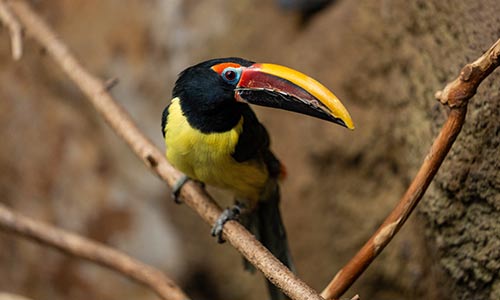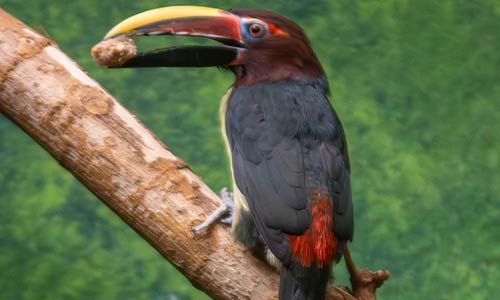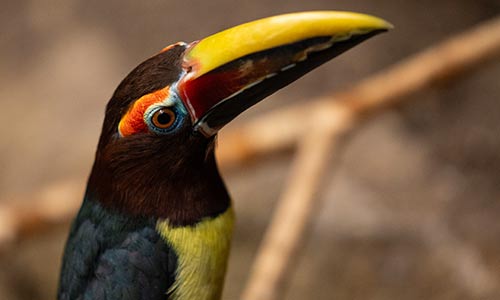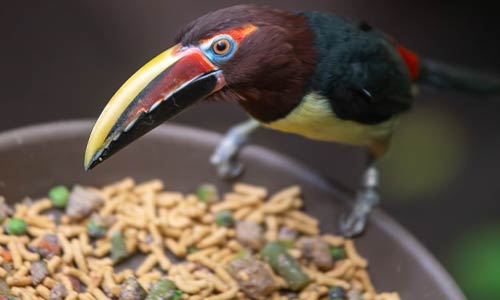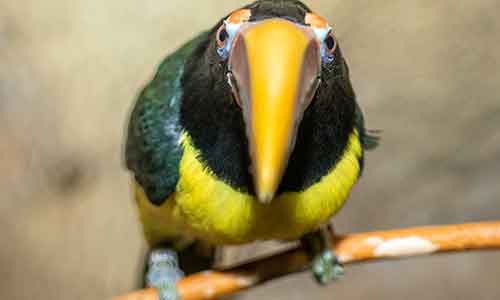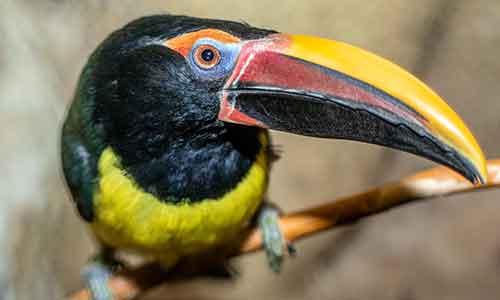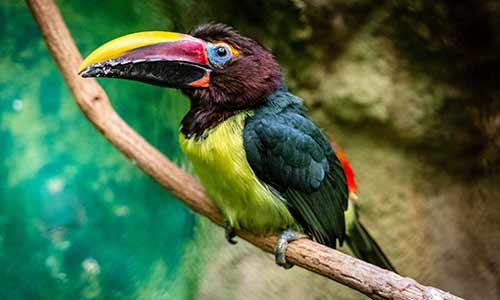Green Aracari
Pteroglossus viridus
About the Green Aracari

Geographic Range:
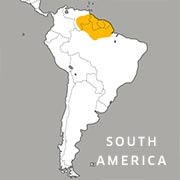
Class: Aves
Order: Piciformes
Family: Ramphastidae
Genus: Pteroglossus
Species: viridis
The green aracari is one of the smallest members of the toucan family, ramphastidae. The edges of the green aracari's beak are serrated like a steak knife; this helps the bird hold on to and gather fruit. They can be found in several countries in northern South America, including Brazil and Suriname.
Green Aracari Facts
Appearance:
The green aracari has dark green feathers on its back, yellow feathers on its chest, and a colorful beak. Males have a black head while females have a dark reddish-brown head.
Diet:
Figs, dates and other fruits, along with occasional insects.
Reproduction:
Green aracaris lay two to four eggs. Both parents help incubate the eggs and care for the hatchlings for their first month of life.
Behavior:
Green aracaris congregate in small groups amongst the treetops of the forest. They spend most of their time foraging and feeding together, often moving down to the canopy or lower levels of the understory to find food. They'll migrate during severe food shortages. Calls are used to communicate danger and during courtship.
Habitat/Range:
Green aracaris can be found in Venezuela, Guyana, Suriname, French Guiana, and northern Brazil.
Median Life Expectancy:
7.2 years
Threats in the Wild:
Considered 'Least Concern' on the International Union for Conservation of Nature’s Red List. Wild Aracaris may fall prey to larger birds and hawks.
You Can Find This Animal in the Bird's World
You May Also Like
At Franklin Park Zoo:
At Stone Zoo:

